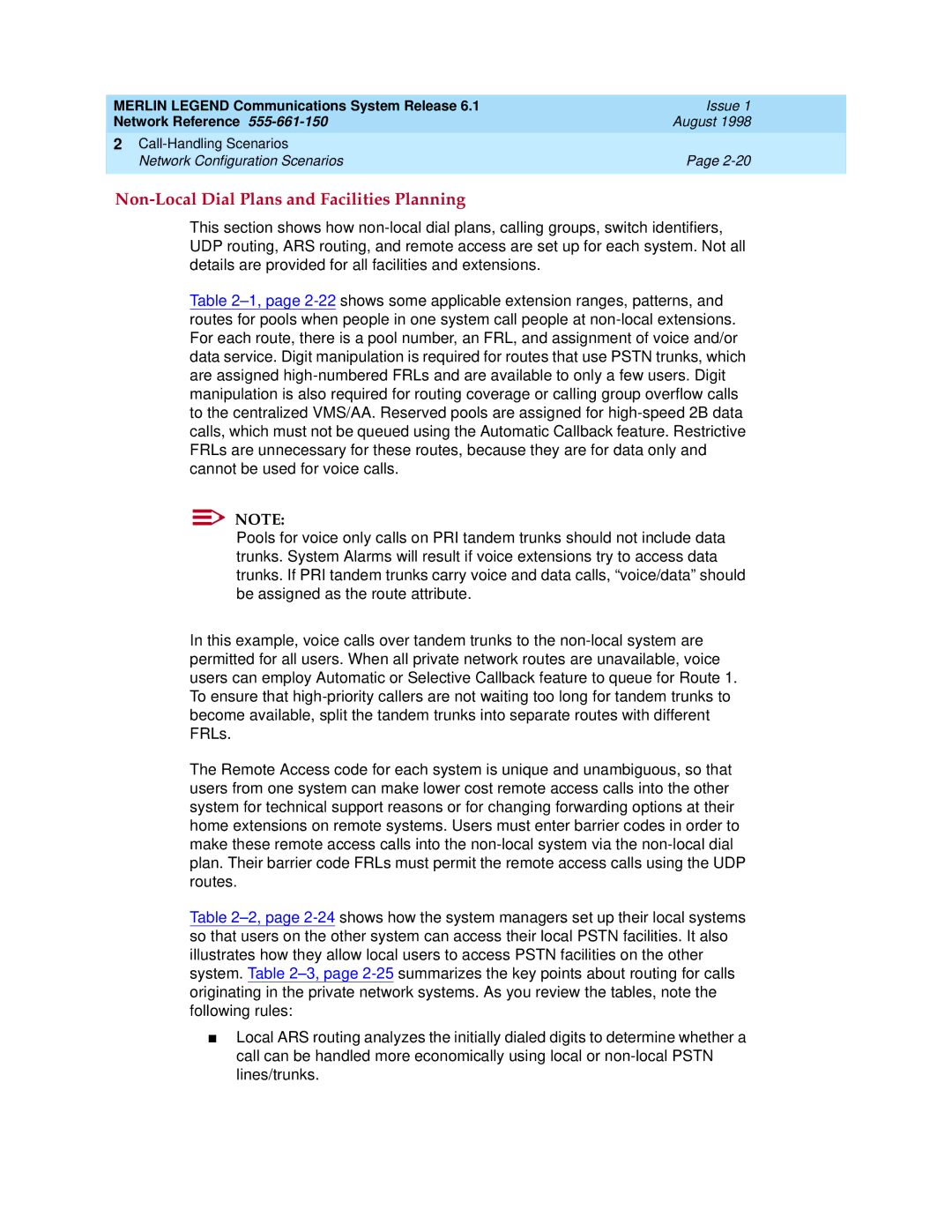MERLIN LEGEND Communications System Release 6.1 | Issue 1 |
Network Reference 555-661-150 | August 1998 |
2 Call-Handling Scenarios | |
Network Configuration Scenarios | Page 2-20 |
| |
Non-Local Dial Plans and Facilities Planning | 2 |
This section shows how non-local dial plans, calling groups, switch identifiers, UDP routing, ARS routing, and remote access are set up for each system. Not all details are provided for all facilities and extensions.
Table 2–1, page 2-22 shows some applicable extension ranges, patterns, and routes for pools when people in one system call people at non-local extensions. For each route, there is a pool number, an FRL, and assignment of voice and/or data service. Digit manipulation is required for routes that use PSTN trunks, which are assigned high-numbered FRLs and are available to only a few users. Digit manipulation is also required for routing coverage or calling group overflow calls to the centralized VMS/AA. Reserved pools are assigned for high-speed 2B data calls, which must not be queued using the Automatic Callback feature. Restrictive FRLs are unnecessary for these routes, because they are for data only and cannot be used for voice calls.
NOTE:
Pools for voice only calls on PRI tandem trunks should not include data trunks. System Alarms will result if voice extensions try to access data trunks. If PRI tandem trunks carry voice and data calls, “voice/data” should be assigned as the route attribute.
In this example, voice calls over tandem trunks to the non-local system are permitted for all users. When all private network routes are unavailable, voice users can employ Automatic or Selective Callback feature to queue for Route 1. To ensure that high-priority callers are not waiting too long for tandem trunks to become available, split the tandem trunks into separate routes with different FRLs.
The Remote Access code for each system is unique and unambiguous, so that users from one system can make lower cost remote access calls into the other system for technical support reasons or for changing forwarding options at their home extensions on remote systems. Users must enter barrier codes in order to make these remote access calls into the non-local system via the non-local dial plan. Their barrier code FRLs must permit the remote access calls using the UDP routes.
Table 2–2, page 2-24 shows how the system managers set up their local systems so that users on the other system can access their local PSTN facilities. It also illustrates how they allow local users to access PSTN facilities on the other system. Table 2–3, page 2-25 summarizes the key points about routing for calls originating in the private network systems. As you review the tables, note the following rules:
■Local ARS routing analyzes the initially dialed digits to determine whether a call can be handled more economically using local or non-local PSTN lines/trunks.
